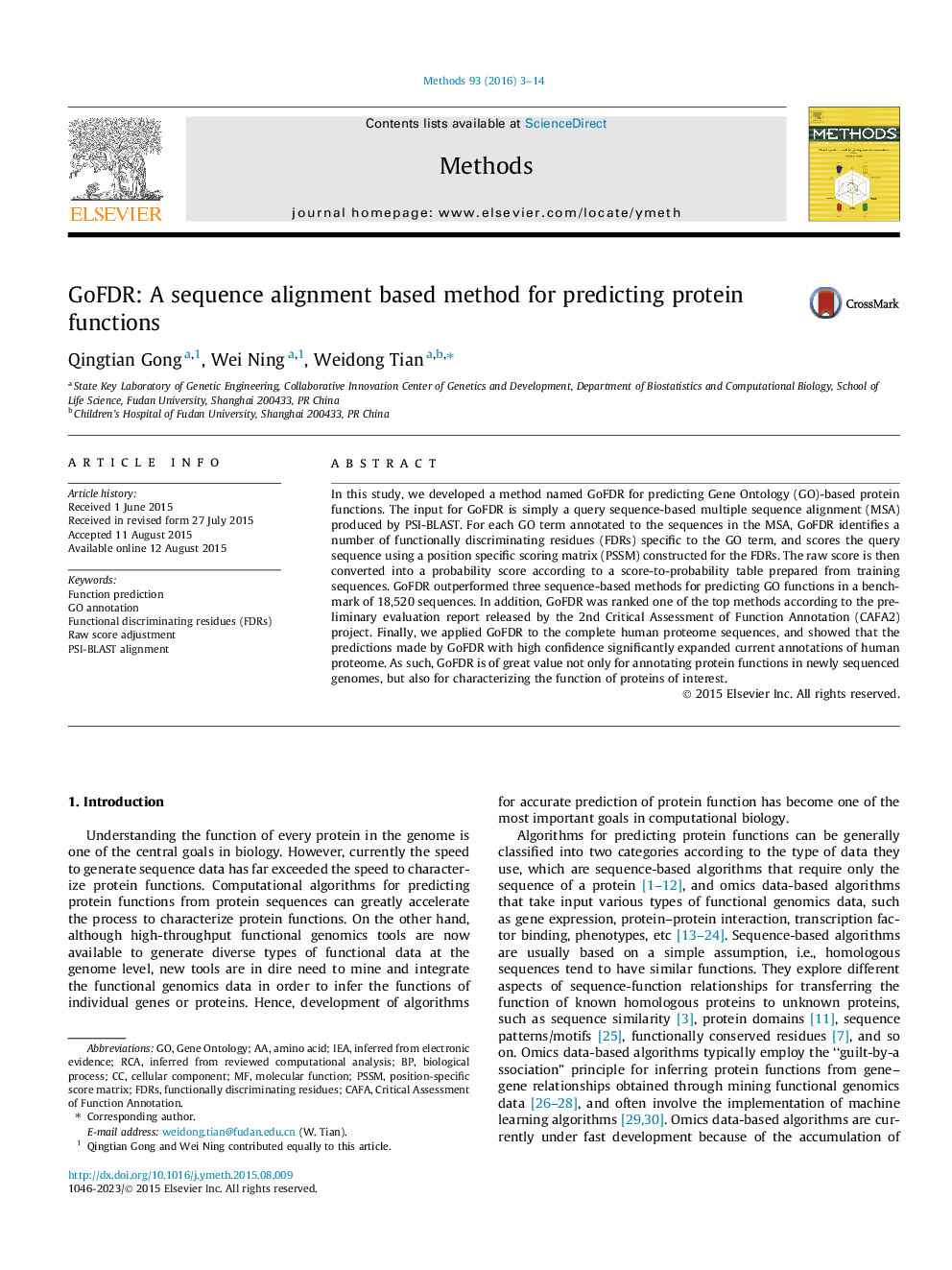| Article ID | Journal | Published Year | Pages | File Type |
|---|---|---|---|---|
| 8340433 | Methods | 2016 | 12 Pages |
Abstract
In this study, we developed a method named GoFDR for predicting Gene Ontology (GO)-based protein functions. The input for GoFDR is simply a query sequence-based multiple sequence alignment (MSA) produced by PSI-BLAST. For each GO term annotated to the sequences in the MSA, GoFDR identifies a number of functionally discriminating residues (FDRs) specific to the GO term, and scores the query sequence using a position specific scoring matrix (PSSM) constructed for the FDRs. The raw score is then converted into a probability score according to a score-to-probability table prepared from training sequences. GoFDR outperformed three sequence-based methods for predicting GO functions in a benchmark of 18,520 sequences. In addition, GoFDR was ranked one of the top methods according to the preliminary evaluation report released by the 2nd Critical Assessment of Function Annotation (CAFA2) project. Finally, we applied GoFDR to the complete human proteome sequences, and showed that the predictions made by GoFDR with high confidence significantly expanded current annotations of human proteome. As such, GoFDR is of great value not only for annotating protein functions in newly sequenced genomes, but also for characterizing the function of proteins of interest.
Keywords
Related Topics
Life Sciences
Biochemistry, Genetics and Molecular Biology
Biochemistry
Authors
Qingtian Gong, Wei Ning, Weidong Tian,
